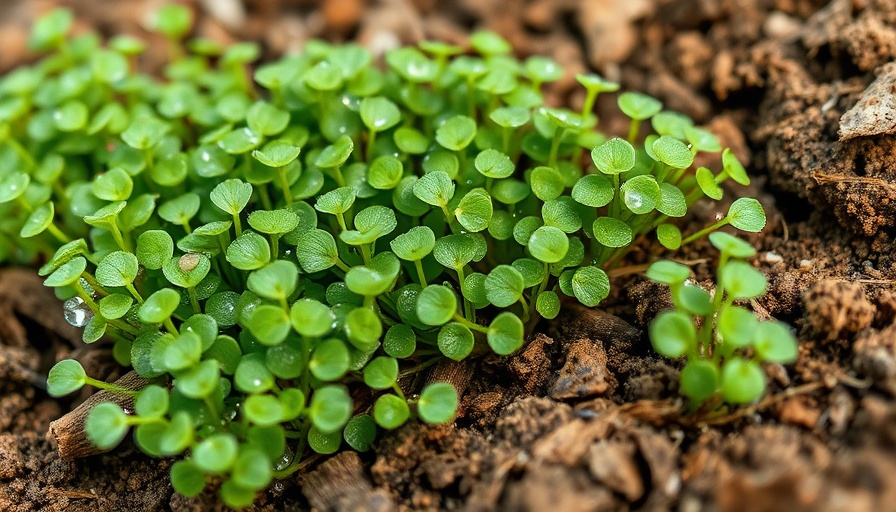
Understanding Hairy Bittercress: Characteristics and Challenges
Hairy bittercress, scientifically known as Cardamine hirsuta, is more than just an annoying weed; it’s a persistent foe for many gardeners and homeowners. This low-growing annual weed hails from Europe and Western Asia but has made its home in much of North America, particularly thriving in USDA hardiness zones 4 to 8. Its tiny, pinnately compound leaves give it an unassuming appearance, with rounded leaflets that can sometimes go unnoticed among your lawn’s greenery.
The plant starts to thrive during cooler months, from late fall through early spring, but can linger due to its remarkable ability to seed prolifically. Each hair-like seed pod can contain up to 30 seeds, and the explosive way these pods disperse ensures that a single weed in your yard can lead to numerous new plants in no time.
Why Hairy Bittercress is a Garden Pest
As it completes its life cycle within mere weeks, hairy bittercress can become a nightmare for lawn care enthusiasts. This rapid reproduction rate is troubling; every plant you fail to treat can double its population as conditions allow. What's worse, its seeds are incredibly resilient, remaining viable in the soil for years. As Matthew Koch, a plant genetics expert highlights, these factors make it difficult to combat this weed effectively without proactive measures.
Simple Yet Effective Strategies for Prevention
Combatting hairy bittercress begins before it takes hold in your lawn. A well-cared-for lawn can significantly reduce your chances of encountering this weed. Here are some friendly tips to keep hairy bittercress at bay:
- Develop a Lush Lawn: The best offense against unwanted weeds is a thick, healthy lawn. Using a 3-in-1 grass seed blend coupled with fertilizers can help revitalize patchy areas, promoting dense grass growth that shades out potential weeds.
- Regular Maintenance: Regularly mowing at a higher setting helps prevent weeds from flowering and seeding. By keeping your grass slightly taller, you enhance its ability to outcompete weeds like hairy bittercress.
- Proper Watering Techniques: Overwatering can create ideal conditions for weed seeds to germinate. Water deeply but infrequently to encourage deep root systems in your grass while starving weed seeds of the moisture they need to thrive.
Understanding When and How to Treat Weeds
If hairy bittercress manages to invade your yard, it’s crucial to act quickly! The best time to treat it is while it’s still young—ideally before it flowers and goes to seed. Hand-pulling can be effective if done early and consistently. Make sure to wear gardening gloves as you work; those sticky seeds can be tenacious.
For larger infestations, consider applying an appropriate herbicide, particularly those labeled for use against broadleaf weeds. Always read labels carefully to ensure you’re protecting your desirable grasses while targeting the invaders.
Final Thoughts and Taking Action
Ultimately, the key to thwarting hairy bittercress is to establish and maintain a robust lawn environment. Not only will it help deter this aggressive weed, but a vibrant lawn can enhance the overall beauty and health of your outdoor space. If you implement these strategies diligently, you'll be well on your way to enjoying a weed-free lawn.
 Add Row
Add Row  Add
Add 




Write A Comment